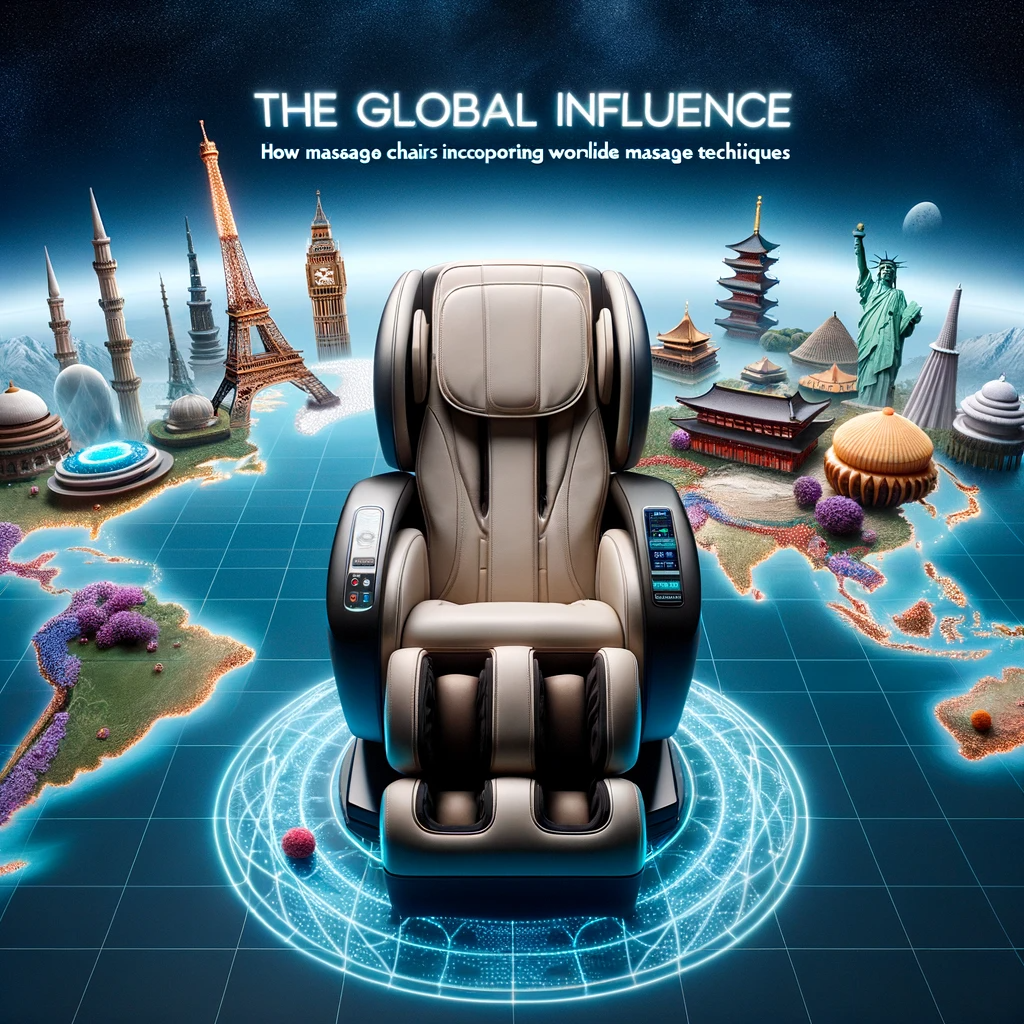Massage is a universal language of relaxation, with techniques passed down through generations across different cultures. But how massage chairs work to integrate these diverse, time-honored practices into a single piece of modern machinery? Let’s journey across continents and discover the global influences shaping your massage chair experience.

The Japanese Legacy: Shiatsu Technique
Shiatsu, which translates to “finger pressure,” is a massage technique that originated in Japan. Massage chairs incorporate this method by:
- Targeted Pressure Points: Using rollers and airbags to stimulate specific points on the meridian lines, enhancing energy flow.
- Rhythmic Pulsations: Replicating the rhythmic kneading that is characteristic of Shiatsu, offering deep relaxation.
The Swedish Soothe
Sweden’s contribution to the world of massage is perhaps the most globally recognized:
- Glide and Knead: Chair rollers mimic the long, gliding strokes and kneading motions of Swedish massage, promoting relaxation and increasing blood flow.
- Layered Movements: Combining tapping, friction, and gentle stretching to rejuvenate the user.
Thai Tradition: Stretch and Compress
Thai massage, known for its stretching techniques, finds its way into modern massage chairs:
- Dynamic Stretching: Chairs offer a reclining feature that simulates the stretches of Thai massage, improving flexibility.
- Sequential Compression: Using airbags, chairs replicate the rhythmic compressions typical of Thai techniques, releasing muscle tension.
The Chinese Roots: Tui Na and Reflexology
China’s ancient practices have influenced various aspects of massage chair mechanics:
- Roll and Push: Tui Na’s push and pull techniques are mimicked using a combination of rollers and air cushions.
- Focused Foot Massage: Many chairs feature specialized footrests that utilize reflexology principles, targeting pressure points on the feet to balance the body’s energy.
The Ayurvedic Touch from India
India’s ancient Ayurvedic techniques focus on balancing the body’s doshas (energies):
- Warmth Incorporation: Some advanced chairs use heated rollers, drawing inspiration from hot oil Ayurvedic massages, aiding muscle relaxation and dosha balance.
- Holistic Programming: Chairs may offer massage sequences aimed at balancing specific doshas, promoting holistic well-being.
The Balinese Blend
Originating from the Indonesian island of Bali, Balinese massage combines techniques from various cultures:
- Mixed Modalities: Massage chairs integrate a combination of kneading, rolling, and tapping, mirroring the multifaceted Balinese approach.
- Aromatherapy Integration: While chairs can’t release scents, some brands promote using aromatherapy in tandem with their products, enhancing the therapeutic experience.
Adapting to Modern Needs
While massage chairs borrow heavily from ancient techniques, they also adapt to modern lifestyles:
- Customizable Programs: Users can often select or even design their own massage sequences, combining techniques from across the world.
- Sensor-driven Adjustments: Advanced chairs use body scan technology to adjust the massage to individual needs, ensuring the global techniques are tailored to every user.
Conclusion
Our world is a tapestry of rich cultures, and the art of massage is a testament to this diversity. Massage chairs are more than just machines; they encapsulate centuries of global traditions, bringing the world’s best relaxation techniques to our fingertips. As technology advances, these chairs will continue to bridge the old with the new, offering an ever-evolving global massage journey.


